What About Bonnie's Dog?
A Poetic Journey into the Return of Mythic Religion in Liminal Networks
(After two popular essays about liminal economics, I turn back to religious questions. Articles on nonduality, pathos, and metamodern oscillation are waiting patiently for their chance to play. As usual, there is an audio version available for paying subscribers. And, since these essays are as much acoustic poetry as they are rational argumentation, would one of you please set the audio version to a beat…?)
Q: What’s with liminal folks becoming Christian?
I. What does the Christian Turn signify?
Terrence McKenna, that charming, psychedelic, Whiteheadian pseudo-philosopher, once devised a typically dubious thought experiment known as: the Timewave. According to the Timewave, temporality (time, etc.) was not moving forward in a straight line. It was actually a self-similar, recursive, and accelerating fractal.
Fractals endlessly repeat variants of the same patterns. In a fractal timewave, all the basic experiential vibes and underlying structures of History repeat themselves at all scales. Maybe you go through a brief Roman Empire in your late 30s? Maybe you have a Paleolithic Era every morning at 6 am? This is a silly but provocative idea. If it were true, we would not be surprised to observe periodically resurgent waves of mythic traditionalism. A temporary surge of re-Christianization would be expected every so often. Even liminal, metamodern, integrative, & Game B communities would — provided they had some Christian cultural heritage — experience these occasional waves of return.
And then the wave would pass.
Yes, I expect the recent enthusiasm for Christianity to be a passing moment in our Zeitgeist. But a statement like that comes built-in with two important obviouslys (or is that obviouslies?) :
1) Obviously, Christian communities still exist in great variety. For some groups, and for some individuals, this is certainly not a fad. You can be wise, healthy, post-postmodern, & metacrisis-informed, via any language, tradition, or symbolism.
2) Also obviously, resurgent “mythic traditionalism” is not limited to Christianity. Everything is back. Full retro-living does not just mean a yen for faux-80s synth soundtracks, curing your own venison, & wearing sexy steampunk pirate boots. It means we are continually recovering, and giving new trans-ironic appreciation to, all the aesthetics of history and prehistory — from Metamodern Islam to Liminal Zoroastrianism, from Proto-Indo-European Magick to Toltec Cults. The Future contains more of the past than the Past did, so let’s not pretend this is just a resurgent Christian thing.
Those were the Obviouslys.
The Less Obviously is that we barely know what we mean by a phrase like “mythic traditionalism.” Are we even clear on what constitutes a myth? Does myth signify a debunked ideological fantasy (e.g. the myth of early retirement), a prehistorical play of subconscious neurogenetic archetypes (e.g. the myth of Osiris), or the premodern stereotypes that organize ethnic-kingdom cultures around Piaget’s concrete-operational form of cognition (i.e. mythic-membership societies)? Does mythic tradition primarily point to patterns from 200 years ago? 2000 years? 20 000?
And to compound the problem, we do not base our observations on access to mythic traditions in their naturalized state. Theorists argue, for example, that mythic literalism is not ancient but instead is a recent reaction to modernism. Maybe myth does not become asserted as fact until it is forced to compete with a dominant regime of scientific materialism?
Modern education, family life, and media, generate large numbers of people who have values & identity-feelings that resemble the premodern “folk.” However, these folks live differently from their ancestors. They are cut off from large sectors of the organic lifeworld and separated from the primary economic production patterns of the old mythic traditionalists. They are deceived on purpose by modern marketing and politics, confused by addictive electronic technology, and saturated with the neuro-disruptive chemical additives that modernity puts in their diet soda. So today’s believers may not be good examples of mythic traditionalism.
If you wanted to be a Chad of Rad Trads (i.e. to have conventional high status in a radical traditionalist worldspace) today, you might not even know where to begin. For the purpose of this poetic personal essay, let us temporarily bracket this problem, however, and speak vaguely enough to pretend we are all discussing the same thing.
Let us say that by “mythic traditionalism” we mean the allure of the popular, inherited narratives, symbol-sets, and social rituals that modern civilization calls “the great religions.” Things like recognizable costumes, Axial Age hierarchies, scriptural holy books, magical names, standardized deity images, politically recognized holidays, urban churches, and rural sentiments — all coupled with the nostalgic longing to return to the great project of cultivating a trans-tribal “people” through the enforced use of a shared story that is asserted independently of its historicity.
We could just call them the believers.
II. Bonnie’s Dog at the Limits of Reason
“Sam Harris will lose,” the process philosopher Bonnitta Roy recently said aloud in my presence.
She was tracking her own thoughts (sounding vaguely startled by them) on a couch in rural New York. Bonnie and I were there performing back-to-back workshops for the shadowy Endemic Group. In the evenings, and at breakfast, we explored the possibility of a New Divinity School and pondered Jordan Hall’s recent conversion to old-school Christianity. And he wasn’t the only one. Was Jesus making a comeback?
Most of us, in these liminal networks, are not raised in families heavily saturated by conformist faith. It is mostly absent (or merely perfunctory) in the more educated and globalized sectors of the contemporary world. This can make us unnecessarily critical of the superficial foolishness and dangerous prejudices of old believers. It can also make us secretly envious and hungry for some secret realm of meaning that we suspect of them of possessing.
We dimly sense the power of Gods, Messiahs, and religiously-activated communities (that’s what the movie DUNE is about), and we gaze upon the mythic traditionalists with a mixture of cautious anxiety and seductive intrigue. Yet as much as we deeply yearn for potent collective meaning, we also require it to be much more pluralistic & chill.
In his classic sci-fi novel V.A.L.I.S., Phillip K. Dick’s half-autobiographical protagonist (“Horselover Fat”) wrestles with an endlessly unfolding series of theological reinterpretations of his personal visionary encounter with God. Or was it a UFO? Or a hyperdimensional machine intelligence manufactured by the Soviets? Among us coherent pluralists & evolutionary multiperspectivalists, it is a pleasure to see Horselover Fat entertaining alternative interpretations.
Too many people seem to think that they can bypass, or quickly leap past, postmodernism by affirming some benign mixture of science & religion. That is necessary but not nearly enough. You also have to really go down the rabbit hole. Down into contextualism and intertextuality. Any hasty attempt to escape radical relativism and pluralism will actually fail to discover the deep pathway beyond postmodernity — for the path passes down, deeper, in & through.
A metamodern Christianity only counts as metamodern and trans-nihilistic if it is authentically comfortable with alternative interpretations of itself and has a good conscience about the insurmountable chasm between reality, knowledge, and belief.
But this is not entirely new. Many great mystics and prophets have struggled to awaken the naive believers of their community to the Great Mystery. Some prophets even agree with me that faith is, in a sense, the opposite of belief. Faith is a way of being with mystery and limitation. Belief is a way of evading mystery by asserting the unlimited potency of hyper-simplified cultural knowledge.
Anyway, Horselover Fat’s friends enjoy provoking him into profligate religious discursions. (That’s right, I wrote “profligate religious discursions.” There’s no going back now!) Fat’s friends often vexatiously bring up two Philosophy 101 problems that typically confound Christian believers:
“How do you know you’re right?” and “What about suffering?”
Typically believers are not reasoned into their beliefs (any more than you get talked into being homosexual), and so they are on shaky ground when trying to cogently present convincing reasons for their feelings of certainty. And, likewise, their strong feeling of virtue can become problematic when they are forced to confront all the ways in which their certainty makes them indifferent to the suffering of others.
For example, Horselover Fat’s friend Kevin constantly brings up his dead cat as a challenge to the existence and/or goodness of God. The senseless death of Kevin’s beloved feline, and the deep pain it causes him, is a visceral counterargument against the notion of a Divine Plan. If I ever meet god, he keeps saying, I’m going to whip out my dead cat and demand an answer: What about my cat?
So what about Kevin’s cat?
And, while we’re at it, what about Bonnie’s dog?
Bonnie told me that just before coming to the New York workshop (which she almost had to miss) her beloved dog was very sick. Possibly, she told me, as a result of an injudiciously swallowed duck egg. The poor beast was suffering, dysfunctional, and seemed to be literally on the edge of death. As a last-ditch tactic — reflecting both on her childhood habit of prayer & the recent spate of re-Christianizations in our communities — Bonnie prayed to Jesus. Hopefully, she doesn’t mind me telling you this.
Prayer, by the way, is interestingly different from meditation. Of course, there are so many types of each practice that distinctions blur but, generally speaking, they have different enactive biochemistries, gestural repertoires & cultural framing. Prayer has a love-driven, passionate, petitionary, grateful, aspirational, exultant, and occult dimension that is typically absent from the psychologically-oriented, metacognitive practices and agnostic flow-states of meditation.
Amazingly, Bonnie’s dog got better immediately.
Stronger. Healthier. Praise Jesus! But what did it mean? Bonnie was chewing on all this during the workshop. How do our post-postmodern, postmetaphysical, trans-pluralistic, transrational, and integrative worldviews deal intelligently with prayer, miracles, and faith?
By the way, the question of Bonnie’s dog is not about magic. We could (but won’t) delve into the nebulous discourse around possible or impossible mechanisms of nonlocal causality. Higher dimensional laws? Morphic resonance? Psychogenic probability skewing? Merging of intentionality into the Everpresent Origin? Maybe. But the point is not simply that sorcery occurred. The point is that the sorcery was mediated by the traditional symbolic and linguistic architecture of the post-Roman, post-Judaic, Western, & globalized world: Christianity.
After the workshop, Bonnie’s dog took a turn for the worse. Poor fellow. But that does not make the question of prayer go away, nor does it remove the problems of God, Christianity, or Mythic Traditionalism as sensemaking tools. More importantly, it doesn’t show us the requirements, vibes, and risks necessary to situate a mythic religion into metamodern space.
III. Cultural Soul Retrieval
The famous Danish existentialist Soren Kierkegaard complained that virtually no one who self-identified as a ‘Christian’ was living according to Christ’s instructions. They were not, he said, actual Christians. They were merely people born into the political and cultural arena of Christendom.
Christendom is no longer a common word. I find it retro & delightful. Being more tolerant than Soren Kierkegaard (or any Dane for that matter), I tend to think that the esoteric instructions of great saints, yogis, and avataric shamans, are not for the general community and, therefore, I do not negatively judge them as inauthentic. Regular people are busy. The self-consciously holy way of life is a rare specialization that need not be the Heart of Religion for most people.
Folks need occasional access to spiritual specialists. They need a meaningful shared story and a set of ritual practices that help them grow toward health, strength, and self-worth by refining and acknowledging their participation in the beautiful dream of a living cultural field. Christendom.
Another facet of my uniquely non-Danish tolerance (Why does he keep picking on Danes? Is it a joke to say you are tolerant by excluding someone?) is that I consider post-Christians to be a viable kind of Christian. And in the post-Christian household of my youth, we had two holy books: The King James Bible & the Tao Te Ching. The Light & the Way.
In my home, religion was a free choice guided by personal instinct. We assumed that religious indoctrination of children was a kind of psychological abuse. You shouldn’t be having sex, getting high, or receiving cosmological myths when you’re only 8 years old! Too soon. Personally, I was voracious for spirituality, religion, & mythology. I read the Gospels frequently. They appeared to contain coded instructions for the yogic transfiguration of consciousness. But as for Yeshua the Redeemer (i.e. “jesus”) and the rest of the acclaimed historical symbolism, I felt nothing. My first emotional connection to Christian material did not come until adolescence. And it came through art.
Salvador Dali’s mystical paintings depicted a holographic, surrealistic, and subatomic transformation of human beings into a Transcendental Christ. This seemed to echo the teleological visions of Teilhard de Chardin. I fell in love with the kind of love that permeated his radioactive, subconscious, and interdimensional cathedrals.
Then came Anne Rice.
She wrote erotically charged, lushly detailed, historical novels about immortal blood-drinking vampires. It was while reading her novel Menoch the Devil, that I first wept at a description of the crucifixion. After that, I started to have delicious dreams about the apocalyptic transfiguration of the world — featuring Gospel characters. Oddly, many of these dreams seemed to take place in Egypt centuries before the Christian era.
Anne Rice wrote so well that she converted herself to Catholicism. I had never heard of such a thing! Most of the intelligent and healthy people I knew were moving away from mythic traditionalism. Then I learned that Canadian media philosopher Marshall McLuhan had also converted (see: The Medium and the Light).
They both viewed Mythic Christian Universalism as the great inheritance of European culture. A transnational infrastructure for humanist mystic populism that included Da Vinci, Mozart, Galileo & the Gothic Cathedrals. Their souls were sniffing around for the normative and organized role-playing that enacts the background Spirit of a Civilization. So it looked to me as though these smart, soulful, leading-edge people were doing cultural soul retrieval.
And why not?
The archaic shamans helped individuals to recover lost, wounded, or immature fragments of the personal Self. Perhaps a similar process is needed at the cultural level. And for many people, that means rediscovering, revaluing, and experientially exploring Christianity. Many of us may still need to integrate material that is stored for us in so-called “Christian” spaces.
Unlike Kierkegaard (that judgemental bastard), I view the religions of tomorrow as having both a right hand & a left hand. That means both a deeper, healthier, and smarter enactment of inherited traditions (right) AND new attempts at unfolding religiousness from within the current technological, ecological, and informational landscape (left).
These approaches are profoundly complementary. The problems facing our species require all hands on deck. We need certain things provided by religiousness (e.g. meaning-making, mass mobilization, cultural confidence, etc.) and need them to be smart, healthy, humanistic, evolutionary, and cooperative with each other. This can look like tradition just as much as it can look like secularism or new religious movements. We’re all in the same boat.
Actually, doing this in traditional forms has a special advantage:
It helps you sympathetically understand conservatives and traditionalists. That’s usually a big emotional blindspot for progressives, liminalists, metamoderns, and other so-called leading-edge folk. The “right” and the “old” are still the majority on this planet. They are not going away. Deep dialogue, deep empathy, and good humor must open us to (and within) these communities. And doing your metamodern religion in the format of mythic traditionalism is a great way to attempt such an important task.
At least for a while. Anne Rice de-converted after a few years and has since striven to distance herself from organized Christianity.
It’s Bonnie’s dog all over again.
IV. Communitarian Mysticism “on the Spectrum”
We all miss out on things. No childhood is fully comprehensive. Yet certain forms of play are classic and, if we miss them, we may need to revisit them later.
Jordan Peterson has a theory that many young adults slip into socially normalized gender dysmorphia because they miss out on basic opportunities for imagination-driven sexual role-playing. Barbie and Ken. Blue and Pink. “Playing house.” Digital machines, he says, have begun to substitute themselves for children’s imagination. And our homes have become seething hives of anxiety about stereotypical gender roles. Leading, of course, to adults who attempt to undertake remedial gender play — with radical surgery and hormone replacements.
Okay, stop thinking about those wonderful trannies. This is not about them. In fact, that whole issue is already outdated. Gender switching & cross-dressing are painfully tame experiments compared to the laboratory restructuring of human genetics and the public distribution of tools for inventing whole new species. Those are already happening, Gorge.
But the reason I brought this up was to consider a religious analogy to Dr. Peterson’s intriguing notion. Despite his provocative social function (as the prejudiced old man yelling at the world’s transgender kids to get off his lawn), he might nonetheless be pointing to an interesting partial truth. If adults have to undertake imaginal re-authenticating explorations to make up for missed gender play in childhood, then maybe we also have to make up for missed religious and mythic community roleplaying?
The Christian conversions we’re seeing do not typically involve people who left mythic communities and are now going back. Arguably those folks (putting aside the question of trauma) already satisfied their childhood need for mystical communitarian dress-up. But the urban, liberal, and agnostic-electronic elites might not have gotten their opportunities yet. They may need to go back.
And for people “on the spectrum,” who perhaps evaded mythic traditionalism because in childhood they were too narrowly focused on reason, systems, and machines (at the expense of social cues, poetry, broken hearts, and nonlinear instincts), they might now be maturing into the recognition of their need for such experiences.
And, who knows, maybe such people need that exploration to be safe, clear, and rules-based. Dogmatic instructions do resemble algorithms. Hell, we should have predicted that Jordan Hall would take his family back to Christ! (It is all so obvious now! Layman has laid out an admirably convincing and easily understood argument!)
But whether we look at this Christian Return through the personal lens of technical and secular individuals doubling back for missed experiences of mystical communitarianism, or whether we look at it through the collective lens of public nostalgia for a unifying narrative, either way, we need to be thinking not just about validating its putative metamodernity but also about preparing for an imminent age of irrationality, transrationality & quasi-rationality.
V. The Inevitable Collapse of the Modern Information Landscape
I gave a presentation in early 2023 called The Age of Sorcery Begins. An obvious topic, right? It can hardly have escaped your notice that our machines are now telepathic, quasi-intelligent, mind-readers capable of “nudging” us toward various beliefs and behaviors and skewing the outcomes of history.
You and I exist already in a world where all audio and video recordings, and apparent reference materials, can be rapidly generated by massively distributed digital tools. Anyone with a voice can request the machine-demons to generate new software, new facts or convincing arguments. You do not have to be a programmer anymore. Someone can call you and sound (and look) like your daughter. Or have their digital assistant do it for them. The mainstream technological world is being run like magic.
In fact, we’ve been in an Age of Sorcery since marketing started to run the global economy in the 1930s. Marketing is controlling reality by controlling desire by controlling human minds through the manipulation of symbols.
Marshall McLuhan, whom I mentioned earlier, taught that digital technology would revive many premodern patterns — from Feudal oligarchy to mythic roleplaying. Part of that is beautiful. A re-enchantment, a return to left/right balance, the constructive interblending of reason and imagination in public ritual. Okay, good. But at the same time, there is regression, superstition, and unreasonable destruction.
At the inaugural RESPOND event at a monastery in Vermont, I was part of a team with Steve March and Rafe Kelley, when our collective hive mind suddenly veered into pondering a pragmatic response to emergent mass superstition, ontological anxiety, and public manipulation by automated egregores. We “saw together” that the new wisdom culture needed an urgent return to the task of producing helpful psychotechologies (talismans, protective mantras, magic safe zones, etc) for regular people in a world spinning out of informational control. What if the public mindset during Covid was… just the beginning?
Our coming mystical age is not likely to be the rational egalitarian utopia envisioned by our liberal-modernist ancestors. The whole notion of an informed public consensus enacted through rational agents and trustworthy institutions seems to be dissolving. Open society and public reason may become an elite affair that will soon exist only behind gated walls. We may be facing the choice between a better or worse Age of Superstition.
Daniel Pinchbeck has been pointing toward a restoration of the irrational. But this trend has been going on for a while. Is anyone old enough to remember when US President Ronald Reagan and his wife were getting policy advice from astrologers? How many other political and corporate leaders have been, and still are, drawing on occult or religious sources? And are they doing it well or poorly? Transrational or prerational? Are their oracles healthy or unhealthy?
The arc of history is not bending away from human irrationality. A flood of cults is coming — powered by psychedelics, AI persuasion tools, & a global sense of mass uncanniness. The tactics of sane civilization may therefore have to pivot from “teaching and enforcing anti-irrationalism” toward cultivating a better class of irrationalism. And there are two great precursors to such a task:
Firstly, the pragmatic prehistoric shamans. Let’s not forget them but let’s forget them for now. Secondly, the great mythic traditional networks that attempted to take over and organize human superstition. To this day, we still watch horror movies where the only way to exorcise a demon is to petition the Jesuit bureaucracy (whose magical super spells trump all other forms of supernatural power). That’s how successful they were in stabilizing a structure atop the sea of magical thinking. A pragmatic futurist today might want to start getting a visceral knowledge of Christian (and not only Christian) tactics for organizing low-information irrational populations. But can this be done in ways that conform to the cultural needs & insight-patterns that characterize emerging metamodern and integrative impulses?
Speaking of Daniel Pinchbeck and strange teams, here’s a picture of Saint Daniel the Stylite (great name) superimposed over the image of a necklace with a naked female Jesus on it. How does that make you feel? And what if that feeling characterized the next 500 years?
VI. Meta-Christianity
Integral Christianity? Christian Process Theology? Metamodern Christianity? Kenosis qua Kensho? (Bonus points if you get that one). What are the possibilities for a coherent pluralist Christian agnosticism with a developmental twist ? And what sorts of meta-theologians and meta-priests will be needed to help cultivate such a phenomenon?
The first temptation is to introduce an emergent sequence of improving versions of Christianity. Why not? The Jewish prophets of the Old Testament seemed to have argued with their vengeful God until He became the loving parental deity of the Gospels. The Bible already includes an evolutionary upgrade. Maybe more are possible. It might help to clarify a series of covenants by which Christianity could appear more analogous to level-like models of emergent cognitive, social, and computational complexity?
Brendan Graham Dempsey is proposing something like this and, of course, Ken Wilber famously introduced his “conveyor belt” model by which mythic traditions could striate into different styles and allow for developmental flow-through. I am not opposed to these. On Monday, Wednesday, and Friday, I even favor them. However, I am interested in what I consider to be two essential components that will determine whether an approach to Christianity (or any mythic religion) is metamodern, liminal, second-tier, etc.
These are (a) the active presence of trained, healthy, and valued natural priests and priestesses both within the tradition AND between the traditions, (b) a framing attitude toward faith that allows it to meet and exceed both modern rationality and the postmodern gap between reality and knowledge. Let us begin with the second point first.
“I am an atheist — but a Christian atheist.”
Slavoj Zizek
My own journey with Christianity is full of strange reversals and curious conjunctions. In some ways, I do feel like a rad trad (radical traditionalist) but from my vantage point, anything more recent than 6000 years is newfangled progressive nonsense.
I do not relate to Christianity as traditional nor was it “encouraged at me” in my childhood. But I grew up with a Bible in the house. I’ve written two books about Jesus. And I’ve done as much as anybody to encourage deeper, wiser, and more nuanced discussions in which Christians feel welcomed in the complexities of the developmental leading edge. In fact, I think we should do a lot more to make people feel welcome to explore, and share, the depth-oriented aspects of the mystical communities and mythic traditions with which they feel resonant.
Christians can often be accused, correctly, of trying to impose a hegemony by pretending they are “marginalized victims” under cultural assault. Beyond that disingenuous reactive posturing, however, is an actual problem of their real exclusion. Liminal, integrative, and metamodern communities need to be warmer and more curious about people’s mythic engagements. And yet we also have to bring a challenge to all this. For me that is summed up in the phrase:
I absolutely do not care if Jesus existed.
I love Christians and Christ. I have been blessed by, and transformed, in Christian churches. I appreciate the potential of inherited language games and I expect Christian symbols to play a role in establishing sacred civilization in the face of the Metacrisis. For me, though, none of that is connected to the acceptance or assertion of any historical fact. It is unbelievably irrelevant whether there was a Jesus. Or what kind of Jesus there was. Christianity works anyway.
This attitude is an example of enfolding deep postmodernity. Mythic religious traditions must enfold both the modern challenge (taking science, progress, and humanist education seriously) and the postmodern challenge — dividuality, relativity, contextuality, multiple valid narratives & the sensations of nihilism.
For me, the phrase “it doesn’t matter if Jesus existed” is a way of foregrounding the fact that metamodern mythic Christianity has to be liberated from fixation on any particular historical interpretation. It has to embrace that plurality and integratively affirm the perspectival chasm between knowledge & reality. Faith is no longer the assertion that reality is perfectly mapped by your group’s metaphysical statements. Faith is no longer certainty. Instead, as it was for many great mystics, it is the confidence that your opaque, indirect and sliding access to reality is deeply okay.
The test here is whether Reason and Relativism are deeply felt, loved, and integrated into your unfolding mythic traditions or whether, on the contrary, you pull back, oversimply, reject the sensations, and double-down on regressive assertionism. But any Christianity strong enough to incorporate these thresholds is welcome in the space of metareligion.
But these developmental integrations require healthy, antifragile, full spectrum, interperspectival, developmental, trans-pluralistic, & nondual Christianity. Which requires requires good people to cultivate it. Gardeners of souls. We need theologians who can articulate Christianity at this level.
We need priests and priestesses who can enact rituals and mysticism in a manner that comports with the emerging civilization. And those new, healthy, Christian religious philosophers and ritual servants require, in turn, intelligent non-oppressive training from a trans-religious source that tweaks and educates variations of all faiths.
So there must be a growth, training, and promotion of meta-theological and meta-priestly expertise. Who can help priests of any religion to be better at their tasks? Who can help theologians of any religion to outperform their predecessors in virtue, wisdom, and health?
The whole question of whether we get a healthy metamodern Christianity (or any other mythic religion) rather than a pseudo-Christian regressive symptom of the cultural and informational disturbance of our epoch, comes down, in many ways, to this:
Can we identify, train, and empower the transcultural, trans-tribal, & trans-ideological shamanoids to maturely assist the representative of all value systems, symbol systems, and worldviews, in the benevolent, non-invasive promulgation of developmentally friendly, skill-based, and ecologically aligned customs of cultural empowerment, virtue-training and meaning-making.
Praise the Lord.
Unless, of course, the situation is much weirder than even I have yet hinted…

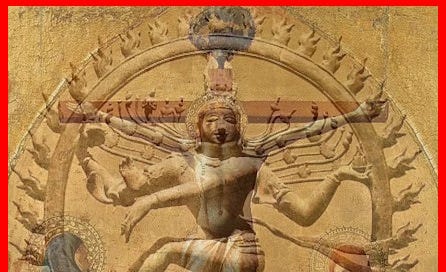




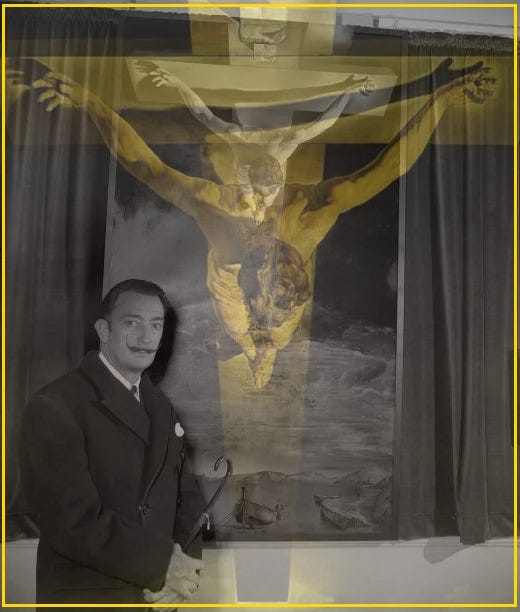
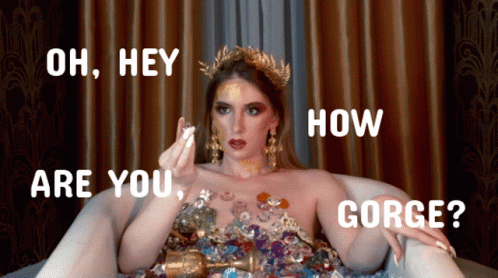
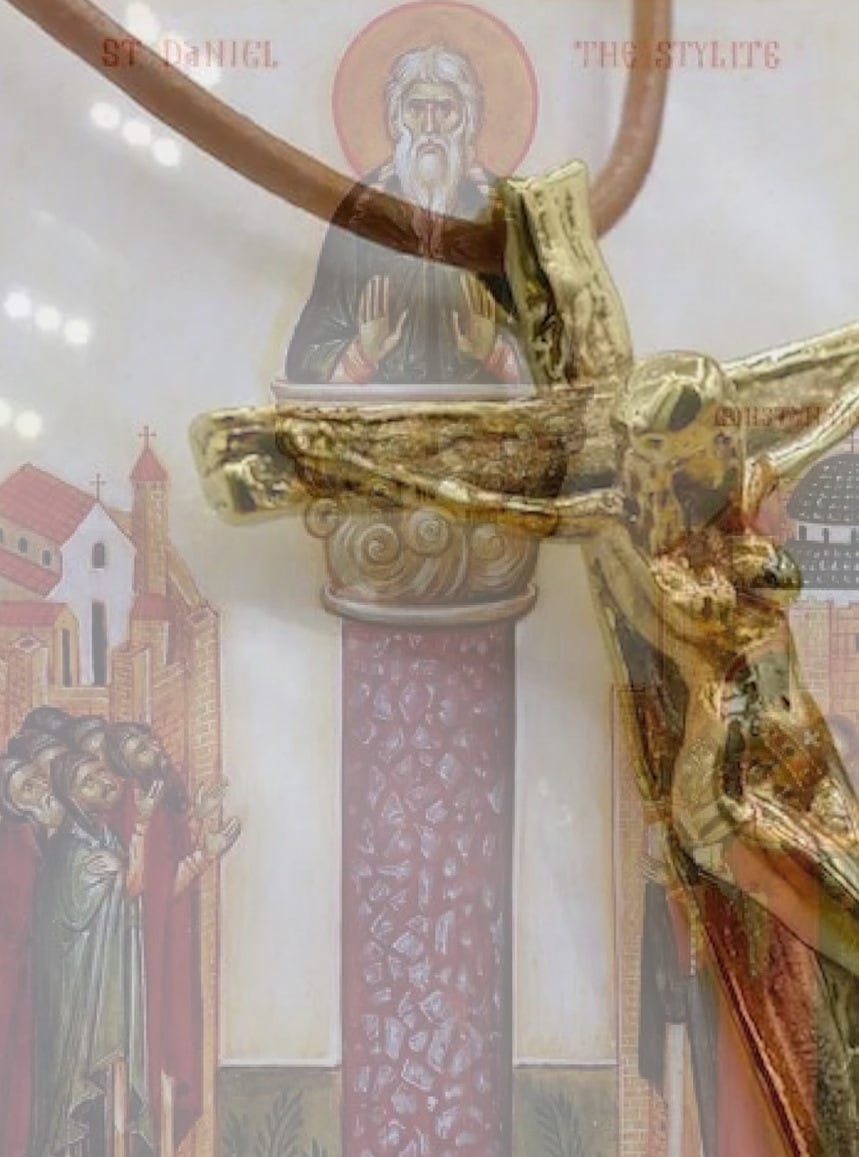
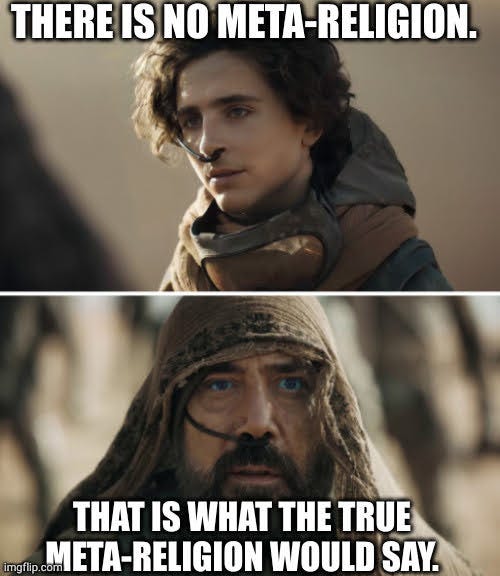
so excellent... by which I sort of mean what I wish I had said this and said it this well.